Résidence royale Unhyeongung (운현궁)
504.9M 2021-12-22
464, Samil-daero, Jongno-gu, Seoul-si
+82-2-766-9090
Unhyeongung à Séoul désigne le lieu du palais où la parenté du roi vivait (résidence royale). Ainsi, la parenté de Heungseon Daewongun, Lee Ha-Eung (1820~1898) et sa famille ont vécu à Unhyeongung. Après que Gojong (1863~1907) soit devenu roi, Unhyeongung a été agrandi et élevé comme un palais pour la gouvernance du pays. C'est à ce moment-là que Unhyeongung est devenu comme une maison semblable à un palais avec quatre grandes portes.
Cependant, le site fut endommagé durant la guerre Imjinwaeran (guerre provoquée par l'Invasion japonaise) ce qui entraîna une réduction du site. En entrant à Unhyeongung, vous verrez sur votre droite plusieurs maisons avec des tuiles alignées qu’on appelle 'Sujiksa'. C’est à cet endroit que vivaient les ministres du palais, les gardes et les servants.
Après avoir passé les maisons Sujiksa, vous trouverez la porte Soseul. Passé cette porte, vous pourrez voir un bâtiment avec une inscription 'Noandang'. C’est là que Daewongun résidait habituellement.
Après Noandang, on trouve le plus grand bâtiment de Unhyeongung, bâtiement appelé Norakdang. Des fêtes pour les 60 ans et d’autres fêtes familiales y étaient organisés et en 1866, le mariage de Gojong et la Reine Myeongseong fut célébré en ces lieux. A gauche de Norakdang, on trouve Irodang, le bâtiment principal de Unhyeongung.
Cérémonie de mariage royal du roi Gojong et de la reine Min (고종명성후 가례 재현행사)
504.9M 2018-04-13
464, Samil-daero, Jongno-gu, Seoul
• Centre d'appels 1330 : +82-2-1330 (coréen, anglais, japonais, chinois) • Pour obtenir plus d'info : +82-2-766-9090 (coréen)
Dans un effort de promotion de la majesté et la grâce de la culture royale coréenne et présenter une importante cérémonie traditionnelle au public, le gouvernement métropolitain de Séoul accueille la reconstitution d’une cérémonie de mariage traditionnelle du roi Gojong et de la reine Min durant le printemps et l’automne chaque année.
La reconstitution aura lieu au palais Unhyeongung, le site original de la cérémonie de mariage le 21 mars 1866, pour l’empereur royal Gojong et son impératrice Myeongseong. Basé sur des recherches historiques approfondies et des consultations par des conseillers juridiques du palais, l’évènement est organisé pour commémorer l’importance de l’histoire coréenne et pour apporter un éclairage nouveau sur une culture traditionnelle en déperdition.
Programme des évènements: Garye en coréen, fait référence à 1) un mariage royal ou un couronnement du roi ; 2) un mariage ou l’installation formelle d’un prince héritier ou son fils le plus âgé, ou le prince impérial ou son fils. C’est une cérémonie nationale majeure, donc il n’est pas inhabituel que des milliers de personnes soient mobilisées pendant plusieurs mois pour cet évènement. De plus, à cause des procédures strictes et complexes ainsi que les formalités des mariages royaux de la dynastie Joseon, les procédures ont été établies selon un ensemble de réglementations.
Dans tous les mariages traditionnels coréens, le marié a habituellement visité la maison de la mariée et l’amène chez lui. La même procédure s’applique pour le roi. Cependant, les maisons communes ont des espaces limités donc les mariages royaux ont lieu dans un byeolgung, connu comme des palais détachés. Pour le roi Gojong et la reine Min, le palais Unhyeongung était utilisé comme le byeolgung.
La reconstitution du mariage commence avec le eoga haengnyeol, une procession royale dirigée par une bannière arborant les armoiries du roi, le dragon jaune. Après la bannière de l’armoirie, suit la bannière des cinq orientations et autres ornements royaux traditionnels.
Ensuite, vient le bisuchaeg uisik ou l’installation formelle de Min en tant que reine, et le chinyeong, pendant lequel le roi Gojong la prend pour reine. La reconstitution du mariage dure environ deux heures.
Temps forts: Cette cérémonie est l’exacte reconstitution de la cérémonie de mariage royal de la famille impériale Joseon. Elle donne l’opportunité de voir des costumes royaux et le style de vie de la dynastie Joseon. Les costumes royaux traditionnels sont spectaculaires et élégants, et le mariage affiche une telle grandeur et distinction royale. Après la cérémonie, il y a une séance photo donc n’oubliez pas de prendre votre appareil photo.
*La cérémonie de mariage a lieu au printemps (avril ou mai) et en automne (septembre ou octobre).
Jirisan Restaurant (지리산)
524.3M 2019-08-01
30, Insadong 14-gil, Jongno-gu, Seoul
+82-2-723-4696
Jirisan is one of the representative Korean restaurants in Insa-dong, an area known for its traditional culture. One of the trademarks of this restaurant, besides its amazingly delectable bean and tofu dishes, is a wooden sign that welcome guests into a neat and cozy interior.
Each day, fresh beans are ground at the restaurant to prepare dishes such as soybean paste, soft tofu, and bean-curd tofu stew. Bean-curds are prepared by using seawater, which gives the tofu a unique flavor. The fresh and clean taste of the tofu is one of the many reasons that choosey tofu aficionados flock to the restaurant.
Not just limited to tofu, Jirisan presents customers with a full-range of side dishes such as kimchi, japchae (glass noodles with sautéed vegetables), cucumber kimchi, seasoned seaweed, braised lotus roots, roasted yellow corbinas (a type of fish), leafy greens, bean-curd stew, and more. The restaurant gives visitors a chance to experience a hearty traditional Korean-style meal, but has thoughtfully toned down its seasonings to appeal to a wider audience (particularly those not used to spicy foods).
One of the recommended menu items is the Jirisan set meal, which offers diners the chance to sample foods that are popular in the Jirisan region. Adventurous diners may want to try the sea urchin soup or dried Pollack soup.
The restaurant, originally a traditional Korean house, has been modified over the years to better suit the needs of its customers. The walls surrounding the structure were removed and a glass ceiling was installed to allow guests to enjoy the natural light of the sun as they sample some of the area’s best traditional Korean cuisine.
Musée du Vieux Parfum de Bukchon (북촌생활사박물관)
525.5M 2021-03-27
90, Bukchon-ro 5na-gil, Jongno-gu, Seoul-si
+82-2-736-3957
Le Musée du quotidien de Bukchon expose des objets ayant été colléctés à Bukchon, village historique autrefois réservé à la noblesse. Pendant des centaines d’années, de vrais trésors dans chaque résidence furent légués de générations en générations mais depuis le développement rapide de la Corée, dans la seconde moitié du 20ème siècle, certains sont devenus obsolètes. Ouvert en 2003, le musée cherche à préserver des artéfacts en les présentant dans un environnement intime et accueillant où vous pouvez découvrir comment ils étaient utilisés au quotidien.
Les groupes de 10-15 personnes peuvent participer à des programmes leur permettant de fabriquer des objets traditionnels ou à des programmes pour prendre part à la réalisation de ssukgaetteok (gâteau de riz à base d’armoise).
Près du musée se trouvent de nombreuses attractions : le Village Hanok de Bukchon, le Parc Samcheong, le Musée des Hiboux, le Musée ToyKino, Musée des Bijoux du Monde, et le Musée des Palais Nationaux de Corée sans oublier les palais royaux comme celui de Gyeongbokgung.
CAFÉ TERRACE (카페테라스)
528.2M 2021-03-26
102-2, Samcheong-ro, Jongno-gu, Seoul
+82-2-723-8250
It is a café that serves delicious waffles. This cafe is located in Jongno-gu, Seoul. The representative menu is waffle.
Bukchon-ri Dullegol (북촌리둘레골)
532.0M 2021-03-19
44 Insadong 14-gil Jongno-gu Seoul
+82-2-747-9700
A restaurant with Korean traditional house-themed interior design. The representative menu is Korean table d''hote. This is a Korean cuisine located in Insa-dong, Seoul.
Sarangchae (사랑채)
534.3M 2016-12-30
6, Insadong 16-gil, Jongno-gu, Seoul
+82-2-737-1155
Sarangchae is located in Insa-dong, one of the most famous neighborhoods visited by tourists. Majority of the restaurant's customers are foreigners, and they offer reasonably priced Korean dishes that are highly popular among foreign visitors.
Bukchonmaru hanok guesthouse [Korea Quality] / 북촌마루한옥게스트하우스 [한국관광 품질인증]
535.9M 2020-09-10
152, Changdeokgung-gil, Jongno-gu, Seoul
+82-10-3253-8751
Bukchonmaru Hanok Guesthouse is located between “Bukchon Views 2 and 3” on a hill in Bukchon Village in Seoul. This two-storied hanbok building with a terrace, which is rarely found among other hanok structures in the area, offers a splendid view of Seoul. In particular, the summit of a hill next to the main gate of Choong Ang High School where the guesthouse is situated is known as the filming location for the famous Korean TV series Winter Sonata (2002). When you open the main gate and go up to the first floor, a small yard is seen with a group of jars on one side. After entering the sliding door through the yard, there is daecheong maru (main floored room) that features the doors opening in all directions and a high ceiling with rafters, making the space open and cozy. The hanok building consists of two floors – the ground floor is equipped with special furniture, a jar table and a log chair made by the owner, and on the first floor are guestrooms comprised of one large room and two small rooms. The neat and clean rooms are designed in a simple way and have lovely bedding with the pattern of five cardinal colors. Its staff members can speak English and Chinese to communicate with guests from other countries. Every morning, guests engage in animated conversation while enjoying a Korean home-style breakfast prepared by the owner in a friendly atmosphere. After having breakfast, if guests want, they can try on traditional Korean clothes (hanbok) and take photographs inside and around the guesthouse to create interesting memories. The guesthouse also provides a hanbok rental service (KRW 30,000 for a day) and tourists wearing traditional Korean clothes can enter both Changdeokgung Palace and Gyeongbokgung Palace, which can be reached on foot within 10 to 15 minutes, free of charge. Moreover, guests can enjoy an open view of the area including Gahoe-dong, Gye-dong and even the lights of the Namsan Seoul Tower at night from the roof top.
Nwijo(뉘조)
538.9M 2024-12-11
27, Insadong 14-gil, Jongno-gu, Seoul
+82-2-730-9311
Nwijo (뉘조) is a Korean restaurant specializing in wild vegetable cuisine. The name ‘Nwijo’ means ‘the god of the silkworm,’ and likens wild vegetables to silkworms in that both can be eaten in their entirety. The restaurant serves original full-course Korean meals that are prepared using hundreds of kinds of wild vegetables, including special seasonal vegetables.
A typical full-course meal starts with delicious pumpkin porridge, followed by seasoned wild vegetables, root vegetable ssam (condiments wrapped in vegetable leaves), slices of boiled meat, and steamed lotus leaf-wrapped rice served with jjigae (Korean stew) and various side dishes. This kind of traditional feast is pleasing to both the eye and the palate and is topped off with sikhye (traditional sweet rice drink). Lunch specials are also available.
Samcheongdong Sujebi (삼청동수제비)
550.6M 2019-06-13
101-1, Samcheong-ro, Jongno-gu, Seoul
+82-2-735-2965
Get off the subway at Gyeongbokgung Station (Subway Line 3), follow the wall of the Gyeongbokgung Palace and you'll find yourself facing a street with majestic trees whose foliage changes every season. This street leads directly to Samcheong-dong. As you enter Samcheong-dong and walk towards the Samchong-dong Tunnel, you'll come across Samcheongdong Sujebi, located right next to the Prime Minister Legation.
Samcheongdong Sujebi became a hit among Japanese tourists, after being featured in a popular Japanese magazine. The main dish here is, of course, sujebi (a traditional Korean soup consisting of chunks of dough and various vegetables). It comes in a pot full of sliced pumpkin, clams, and potatoes. This delicious soup is so tasty that there's almost always people lined up outside the restaurant. Other popular items include dongdongju (traditional Korean liquor) and gamjajeon (a Korean potato pancake that uses only potato starch and no other ingredients).


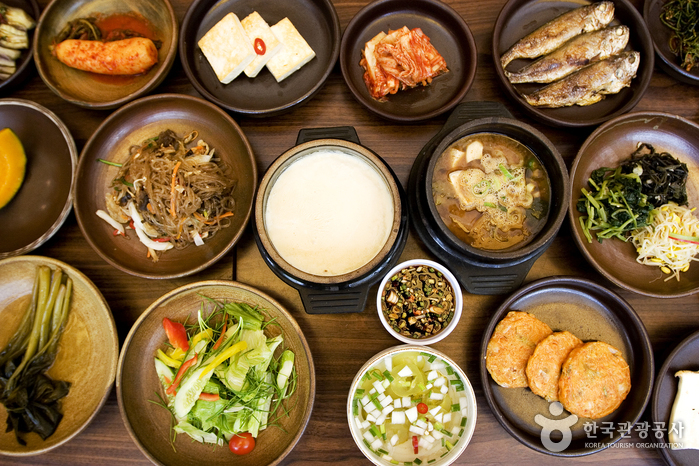
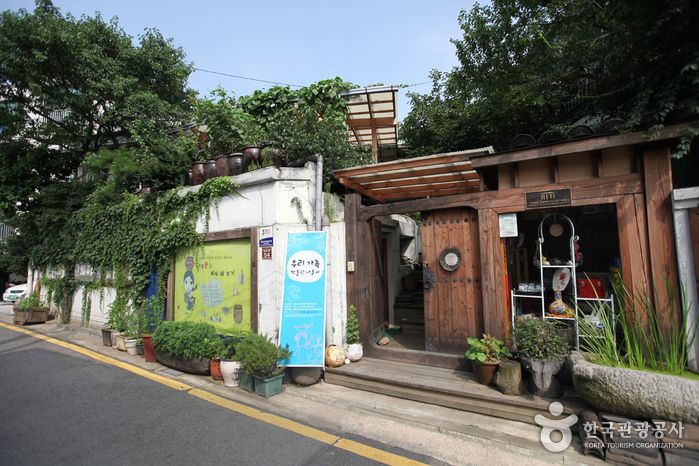
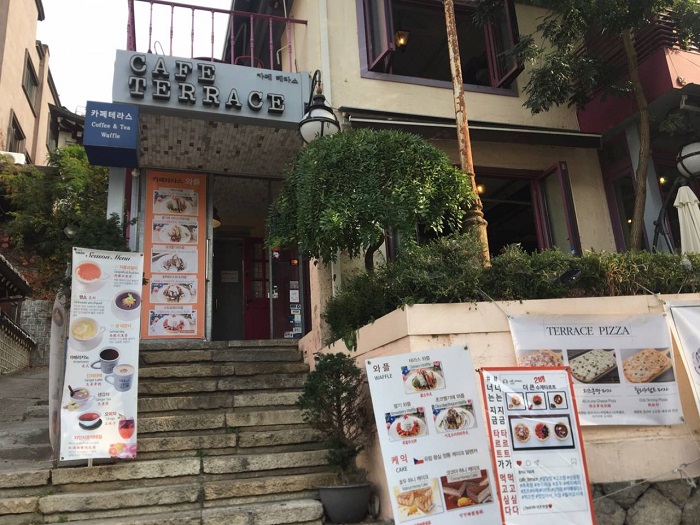
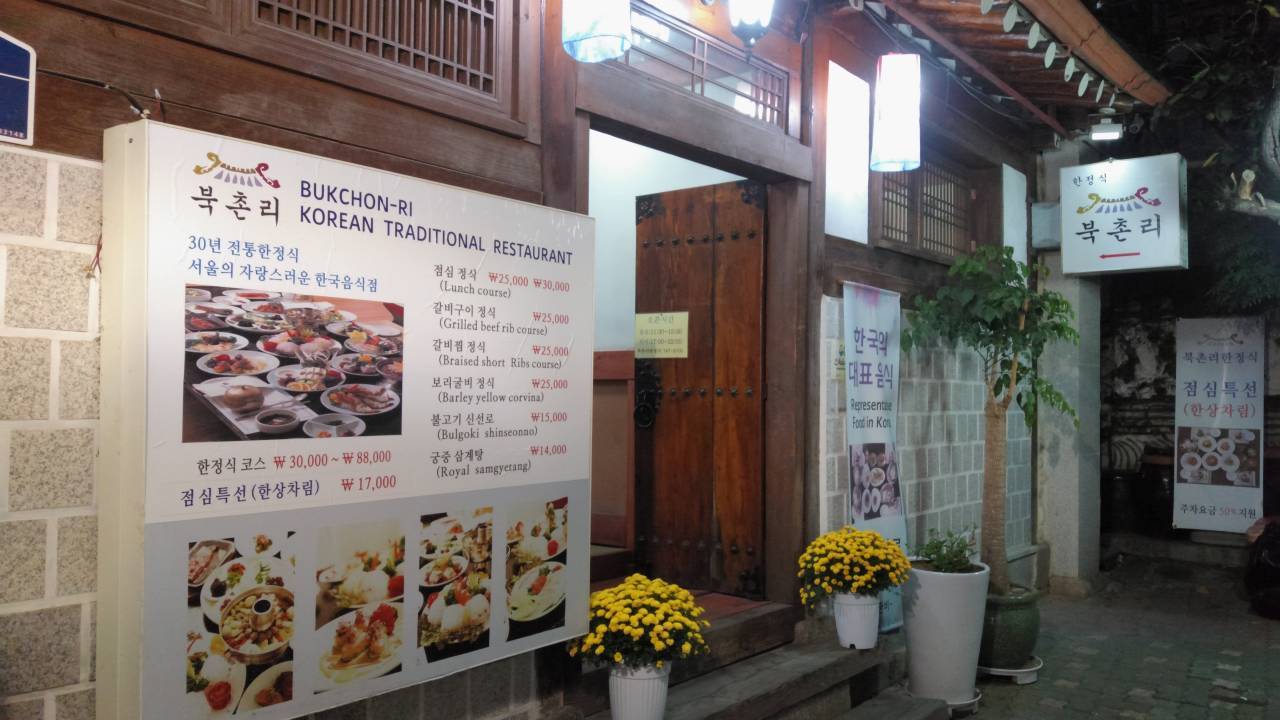
![Bukchonmaru hanok guesthouse [Korea Quality] / 북촌마루한옥게스트하우스 [한국관광 품질인증]](http://tong.visitkorea.or.kr/cms/resource/32/2574032_image2_1.jpg)
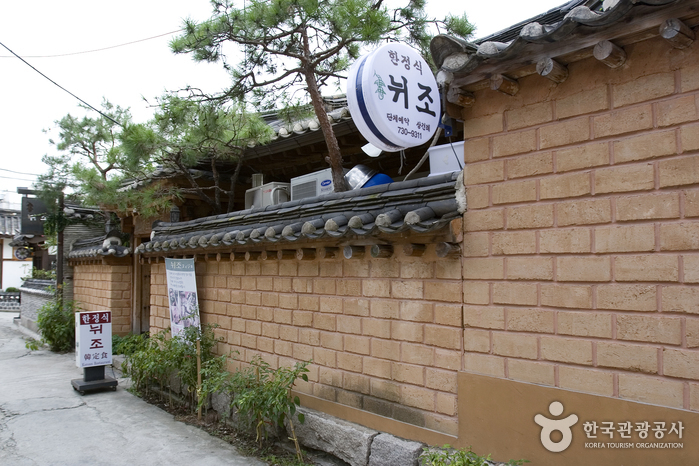
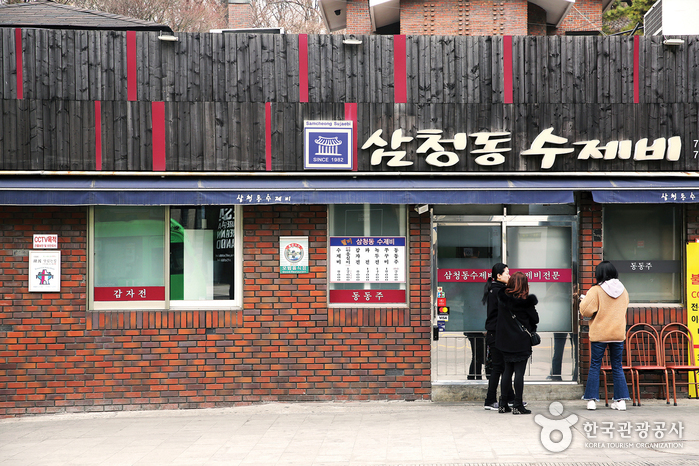
 Français
Français
 한국어
한국어 English
English 日本語
日本語 中文(简体)
中文(简体) Deutsch
Deutsch Español
Español Русский
Русский